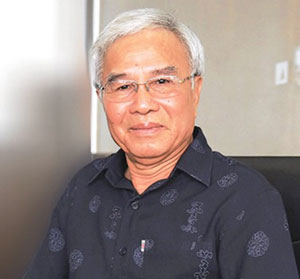 Opinion
Opinion


|
| Expert Trần Chủng. — Photo ktdt.vn |
It’s very common for the streets to flood after heavy rain in Hà Nội. Kinh Tế & Đô Thị (Economy and City) newspaper talks with Dr. Trần Chủng, former head of the State’s Construction Work Evaluation, to find the causes and solutions to the issue.
It’s becoming more common for streets to be water-logged in Hà Nội. Why is this?
Flooding after heavy rain is due to rapid urbanisation, with houses and building constructed everywhere, hindering the flow of rain water.
Lakes and ponds used to act as reservoirs to store water. But now many lakes and ponds in the city have been filled in.
Rivers such as Tô Lịch, Nhuệ and Sét have been narrowed, which badly impacts irrigation.
So, flooding after rain is unavoidable.
The city introduced several measures to prevent flooding. Do you think the measures were effective?
We can’t deny the city has made efforts to deploy several solutions for the flooding.
Many projects were started with foreign investment, especially Japanese official development assistance (ODA).
Most of the projects were for irrigation, including widening the sewage system, and dredging Tô Lịch River and others in the city.
But honestly, the measures have not been effective.
It is necessary to have monitoring systems on rivers, canals and sewers.
The systems would help to analyse irrigation capacities of rivers, canals and sewers as well as control their status such as when they are overloaded or full of garbage.
However, this is difficult to achieve.
There are many other reasons for the flooding in big cities of Hà Nội and HCM City.
The major cause of flooding in Hà Nội is said to be rapid urbanisation along with a lack of planning for urban transport. What is your view?
That is correct.
Current urban transport planning was partially to blame for flooding in the city.
In one example, on vacant land of 1,000sq.m, after heavy rain, the water would be 10cm deep. But if houses, buildings and other constructions account for 60 per cent of the total area of the land, the water would be much deeper.
Urban transport planning without a long-term strategy and vision had made anti-flooding work harder.
This is a challenge for the city.
Could you recommend any solutions?
I doubt the irrigation capacity of the city’s rivers, canals and sewages.
I think there is a lot of trash stuck in the irrigation system. It’s time to check the system.
This is an urgent task to fight flooding in the city. — VNS